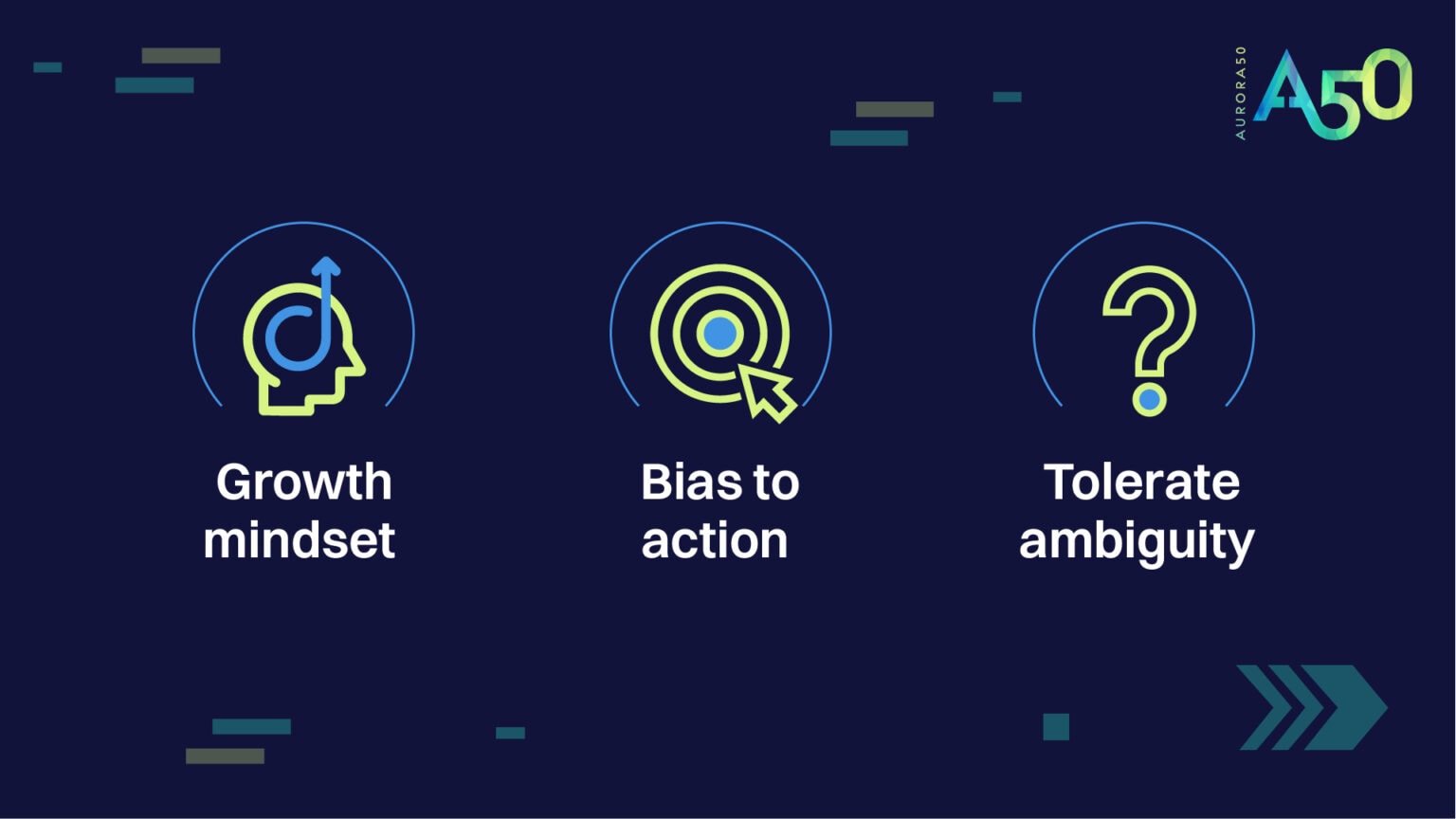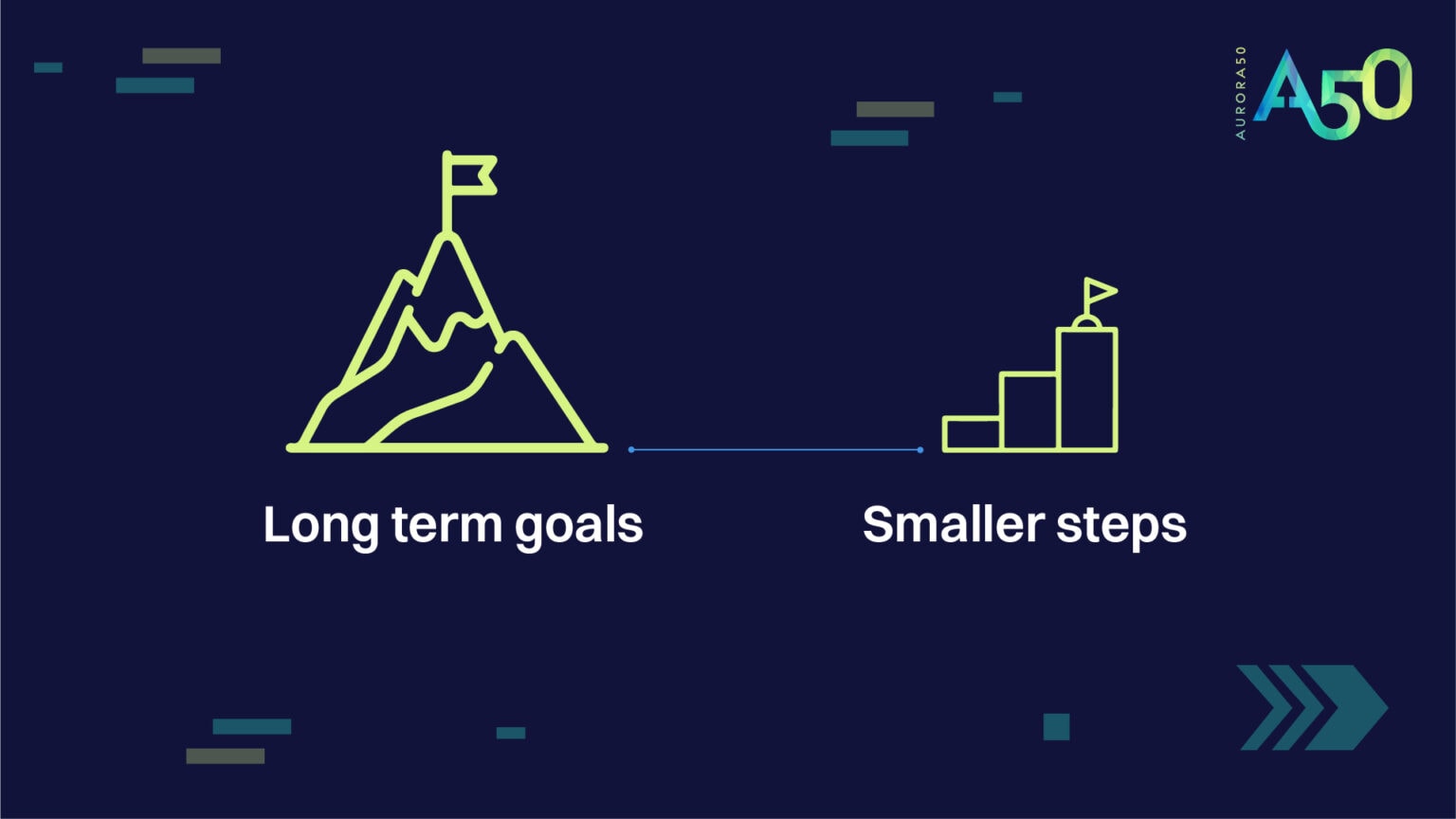What is design thinking?
Diana Wilde 29 September 2022
I am
qualified in design thinking and we have used design thinking to build Aurora50 as a business, in our accelerators and even just to unlock the idea that boards need to be balanced (more on that soon).
But what is design thinking?
Design thinking is a human-centred approach to innovation that draws from the designer’s toolkit to integrate the needs of people, the possibilities of technology, and the requirements for business success.
Tim Brown
Executive chair, IDEO
Design thinking started out as a process for creating sleek new technology and products.
That is now a methodology widely used across both the private and public sectors.
For businesses all around the world, design thinking is a process for solving problems by prioritising the consumer’s needs above all else.
You can use design thinking to:
It relies on observing, with empathy, how people interact with their environments.
Design thinking employs an iterative, hands-on approach to creating innovative solutions.
The five steps of design thinking
In practice, design thinking involves five key steps to guide you:
1. Empathise
This phase involves developing a deep understanding of the problem, the end users and their needs.
In the context of careers, this would involve gaining a deep understanding of yourself, the factors that influence your career, and what drives you in the workplace
2. Define
Next, the information collected in the ‘empathise’ phase is analysed to understand the specific problem that will be solved.
For example, is the problem that you need a new role or specific experience to achieve your ambitions?
Are you looking for learning and growth? Which stakeholders are important to your career? And how can you add more value to the business?
3. Ideate
Now you start to brainstorm. You’ll brainstorm a range of solutions to the problem.
What are the possible career paths or options available to you, that might help you to solve the problem?
4. Prototype
In this phase, scaled-down versions of your preferred solutions are produced.
It may be helpful at this stage to think about the actions you could take in the next fortnight, that would give you new information about the career options you’re considering.
5. Test
The prototypes are tested thoroughly.
Information is gathered to guide further development and refinement of your prototype.
This is where you gather the information you need about possible career options.
You might conduct information interviews to gain a deeper understanding of roles, or you might conduct market research, or even try a new role on a temporary or voluntary basis.
6. Iterate
There is a secret sixth step and it is one you will practice again and again: iteration.
As you iterate, the prototypes are further refined based on information collected in the test phase, and are tested and refined again until the solution is reached.
Design thinking for innovation
Innovation can be challenging, because our thinking tends to be limited by our own preconceived ideas, beliefs and assumptions.
We often dismiss most creative ideas too quickly, thinking them impossible or too risky.
To be innovative requires us to take risks and to get comfortable with ambiguity.
Design thinking focuses on developing:
- a growth mindset
- a bias to take action
- and a willingness to tolerate ambiguity.
The design thinking process is built on the belief that mistakes are critical learning opportunities, and that we can learn our way forward through action.
The goal of design thinking is to change the way you think about the problem.
It focuses on correctly defining the problem and moving from a fixed mindset to a growth mindset by altering your narrative to solution-based thinking.
Design thinking can help you to break down your long-term goals into smaller steps.
This is a non-linear process. You need to be curious in framing problems, to try to explore new solutions and options.
In turn, this enables you to be curious and to take action.
If you follow design thinking’s five-step process and then iterate, you can rest assured that you are still on the right track – even if the last test didn’t go so well.





